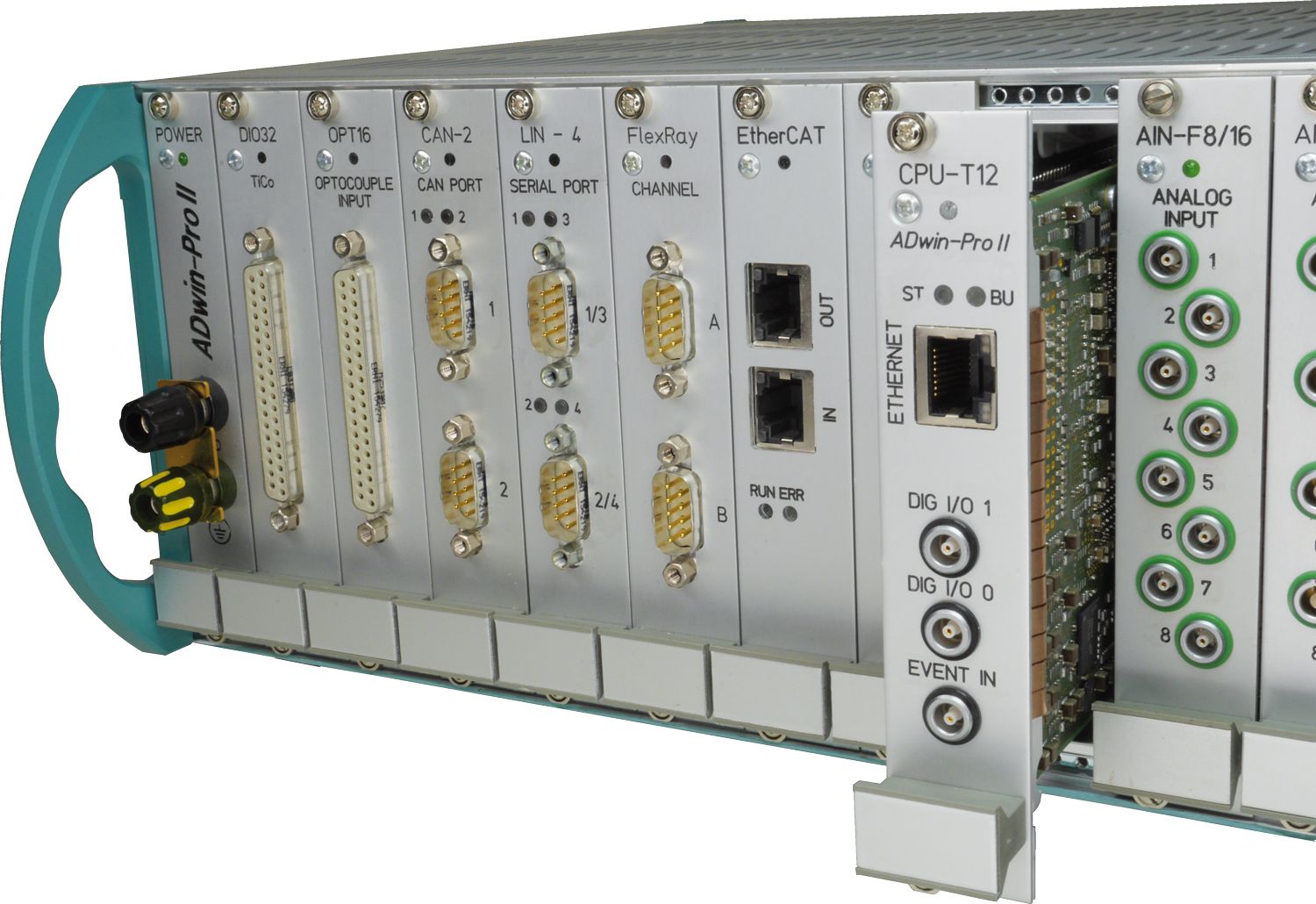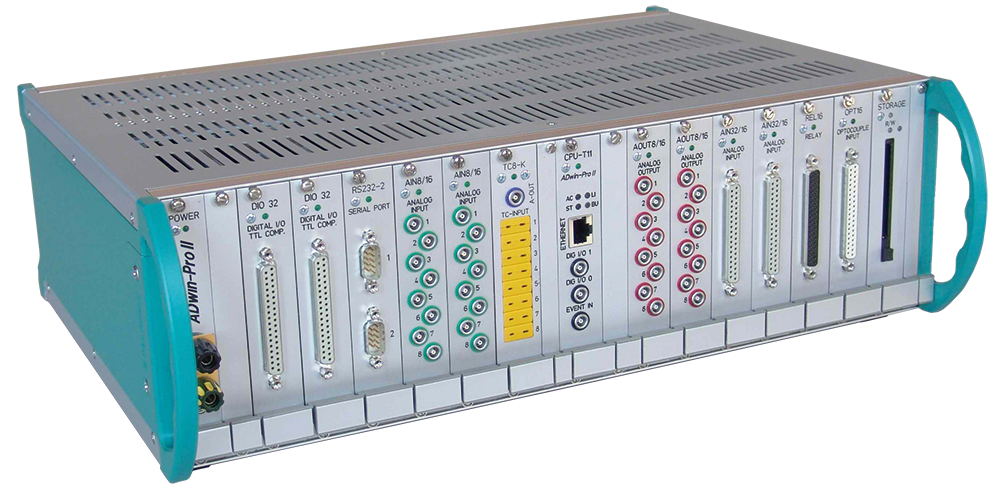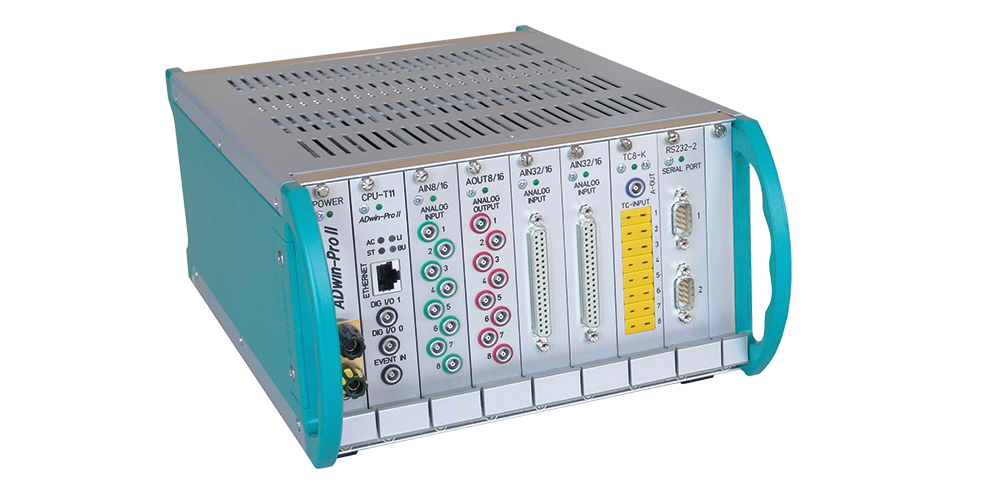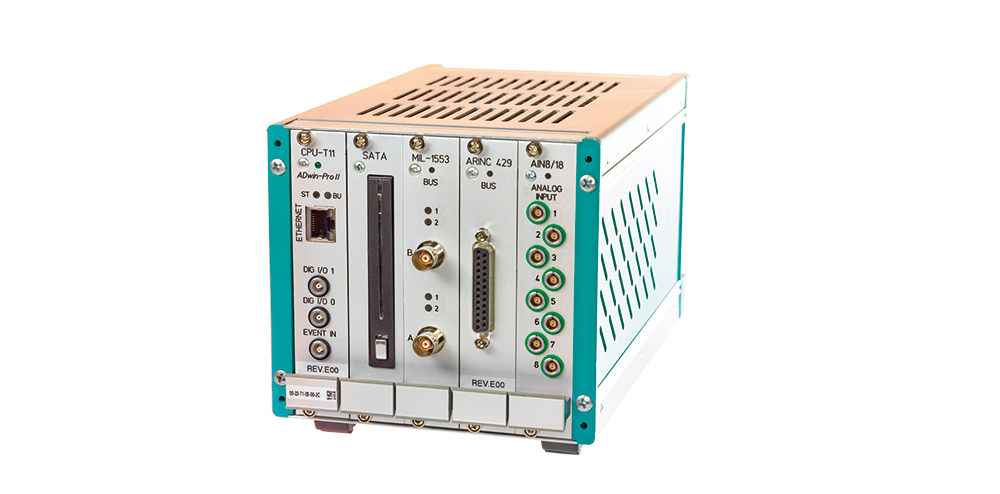With the computing power of the T12 processor and the data transfer capacity of the Pro II bus, the system sets new standards. Choose from a wide range of interfaces to find the perfect fit for your project. Benefit from synchronous data acquisition and output.

ADwin-Pro II is available in a variety of robust housings for a wide range of applications: as a desktop system for the laboratory (Standard), as a system for control cabinet mounting (BM), or as a system with DC power supply for mobile use (DC).
Up to 16 slots and a wide range of different modules provide the ideal, flexible basis for fast real-time applications.



The analog input modules for ADwin-Pro II are the interfaces to your measuring devices, analog transducers, and amplifiers. They are ideal for solving fast and time-critical real-time tasks. Each analog signal is routed through its own ADC.
The analog input modules for ADwin-Pro II are the interfaces to your measuring devices, analog transducers, and amplifiers. They are ideal for solving fast and time-critical real-time tasks. The analog signals are routed to the ADC via a multiplexer.
| Plug | Without filter | Filter 5 kHz | Filter 50 kHz | Filter 10 kHz, ±30V |
|---|---|---|---|---|
| LEMO | AIn-8/18 | AIn-8/18-LP5 | – | AIn-8/18-LP-30V |
| LEMO, TiCo | – | – | AIn-8/18-LP50-TiCo | AIn-8/18-LP-30V-TiCo |
| DSub | AIn-8/18-D | AIn-8/18-LP5-D | – | AIn-8/18-LP-30V-D |
| DSub, TiCo | – | – | AIn-8/18-LP50-D-TiCo | AIn-8/18-LP-30V-D-TiCo |
The analog output modules for ADwin-Pro II are the interfaces to your measuring devices and actuators. They are ideal for solving fast and time-critical real-time tasks. Each analog signal is routed through its own DAC.
The module converts signals from Pt temperature sensors using analog-to-digital converters (ADC) and allows either the temperature or the applied voltage to be queried.
All settings are made via software. A sequence controller records the measured values and relieves the ADwin processor. The module can filter interference frequencies from the digital signals.
The module converts signals from common thermocouples and allows the temperature or the applied voltage to be queried (with and without cold junction compensation).
All settings are made via software. A sequence controller records the measured values and relieves the ADwin processor.
Are you still using modules from the ADwin-Pro I family? With the powerful T11 processor, you can work in a backward-compatible manner and use Pro I modules in parallel with Pro II modules.